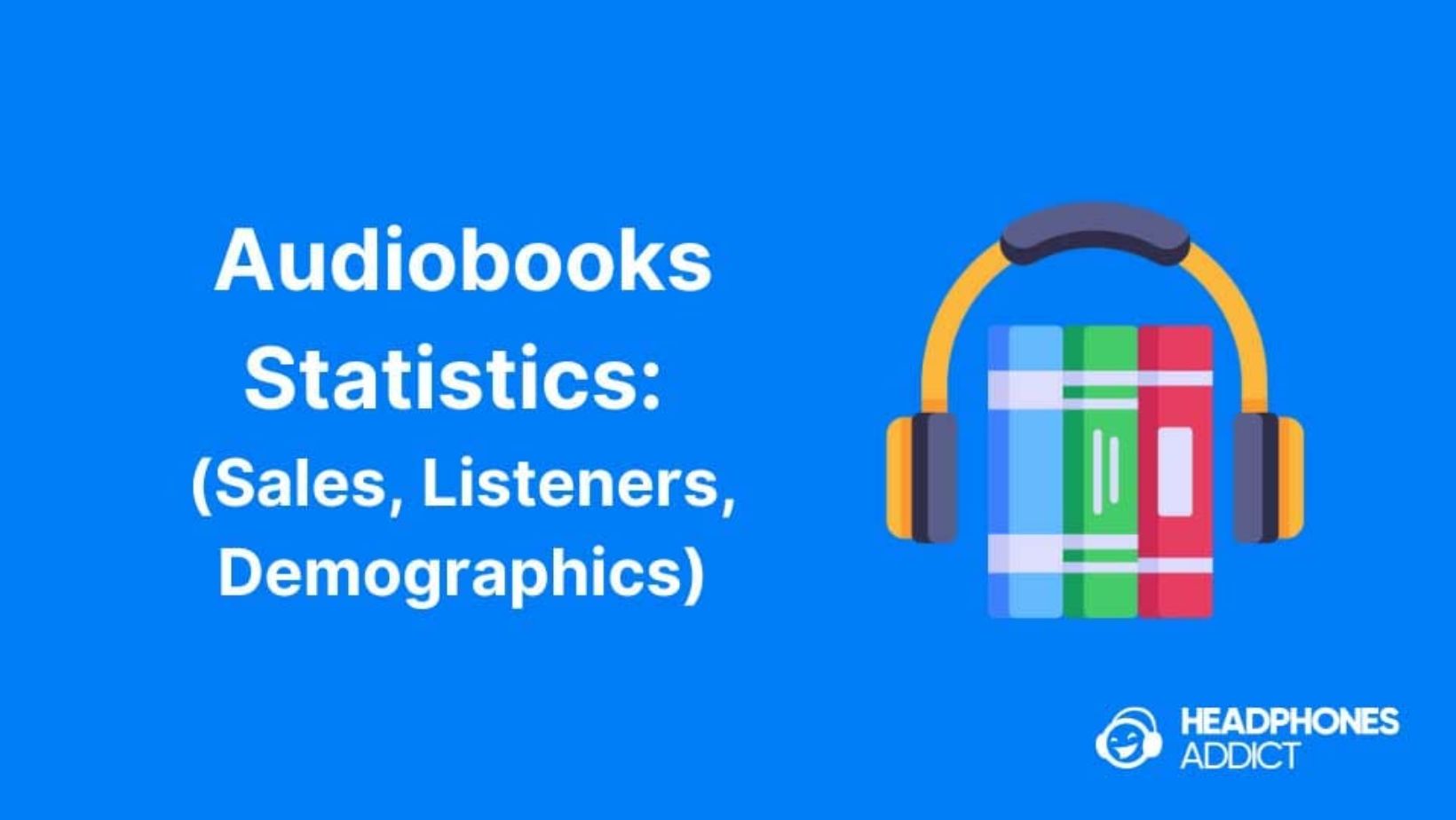Audiobooks have taken the literary world by storm, revolutionizing the way we consume stories and information. The convenience and accessibility they offer have made them a favorite choice for millions of people around the globe. But have you ever wondered about the impact and popularity of this audio medium? In this article, we will delve into 10 amazing Audiobook Statistics that will give you a unique perspective on this growing industry. So, let’s dive in and discover the fascinating world of audiobooks!
In this article, we’re covering a range of topics of the Audiobook Statistics & Industry, including:
- The size
- Market share
- Consumption Habits
- File Sizes
- And more!
Let’s dive into the stats:
Table of Contents
Audiobook Statistics & Industry Size:
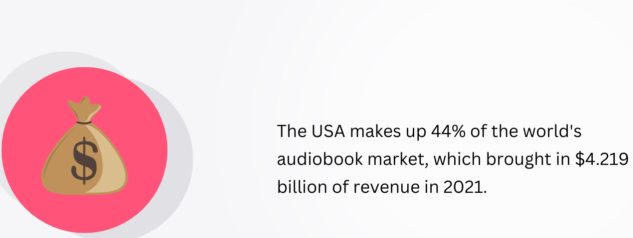
In 2021, the audiobook industry generated annual revenues of $4.219 billion, with the US audiobook market accounting for $1.875 billion of that total.
According to GrandviewResearch, the Audiobook Statistics of the book industry is projected to experience a compound annual growth rate of 26.4% from 2022 to 2030.
Book Sales Type By Market Share:
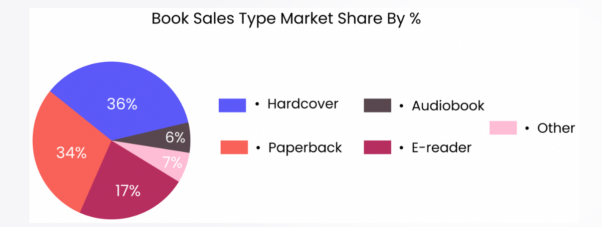
As of 2017, hardcovers dominate the book market, holding a significant market share of over 36%.
Digital formats, including audiobooks and e-readers, account for only 23% of the market, according to The Writing Cooperative.
The audiobook industry has experienced exponential growth in recent years. According to a report by the Audio Publishers Association (APA), the overall revenue from audiobook sales reached a staggering $1.2 billion in 2021, representing a significant 26% year-over-year growth.
Number of Audiobooks Published Per Year
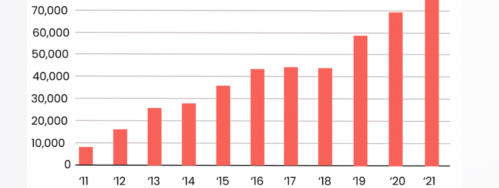
Statista reports that the average number of audiobooks published each year has been steadily increasing over the past decade, reaching 74,000 titles in 2021.
The growth trend is expected to continue as technological advancements reduce the barriers, such as narration costs, associated with releasing audiobooks.
Audible Market Share
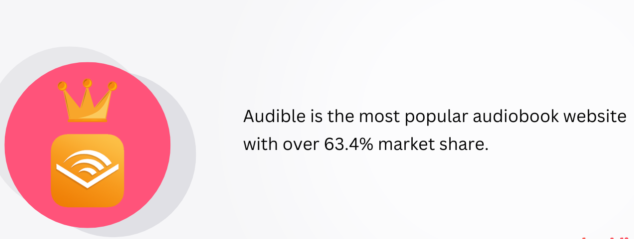
IbisShare, reveals that Audible, a prominent player in the audiobook market, holds an impressive 63.4% market share. Other competitors in the Audiobook Statistics include Apple Books, Kobo, Google Play Books, and Blinkist.
Audible Royalty Fees:

The royalty fees for audiobooks vary across platforms. Audible, for instance, charges a 75% royalty fee on audiobook sales, which can be reduced to 60% if authors decide to exclusively sell their books on the platform.
Apple Books, on the other hand, has a standard 70% royalty fee for all book types.
Kobo offers varying royalty fees, ranging from 55% to 68%. For books priced above $2.99, the fee is 55%, while audiobooks priced below $2.99 have a 65% royalty fee. If a Kobo token is used, the royalty fee increases to 68%.
Audiobook Consumption:
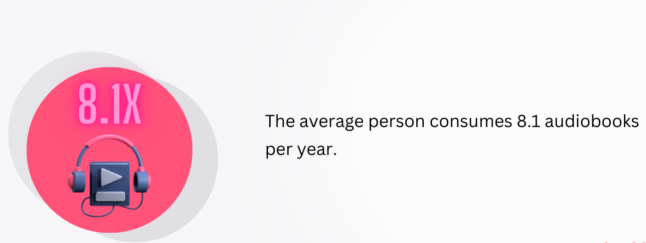
The popularity of audiobooks extends far beyond English-speaking countries. The global audiobook market is expanding rapidly, with major publishers translating popular titles into multiple languages. This has opened up new markets and provided a platform for diverse storytelling worldwide.
A survey conducted in 2020 found that the average US consumer listens to 8.1 audiobooks per year, which is lower than the average number of books read in a year (12.6).
Audiobook Consumption vs. Print Books:
Despite the growing popularity of audiobooks, print books still hold a special place in the hearts of many readers. A survey conducted by the Pew Research Center in 2021 revealed that 65% of Americans had read a print book in the past year, while 25% had listened to an audiobook. This suggests that while audiobooks are on the rise, print books continue to play a significant role in reading habits.
Which Platform Best to Listen Audiobook
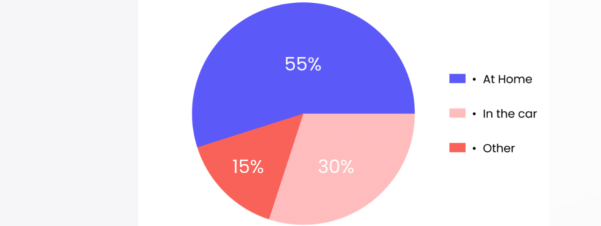
Publishers Weekly’s study reveals that over 50% of people listen to audiobooks in their homes, while around 30% listen while driving or in the car. The remaining 15% listen to audiobooks elsewhere. Interestingly, the survey highlights that 70% of audiobook users multitask while listening.
Average Audiobook Length:

According to Kobo, the average audiobook spans 10 hours and has a file size of approximately 28 MB. In comparison, the average Kindle e-book consists of 300 pages, approximately 75,000 words, and has a file size of 2.6 MB.
Cost of Audiobook Narration:

Producing an audiobook involves expenses, particularly for narration and production. Professional narrators typically charge starting rates of $150 per finished hour, while some of the most famous narrators may charge up to $450 per finished hour. Additionally, hiring an audio engineer and editor is necessary. Considering that the average audiobook is 10 hours long, producing an audiobook can cost approximately $5,000. The viability of this investment depends on the projected sales volume.
Audiobooks and Education:
Audiobooks have found their way into classrooms, providing valuable educational resources. The American Library Association (ALA) recognizes the importance of audiobooks for literacy development and offers awards for outstanding audiobook productions. Audiobooks provide an engaging medium for students, improving reading comprehension and vocabulary skills.
The Emergence of Audiobooks
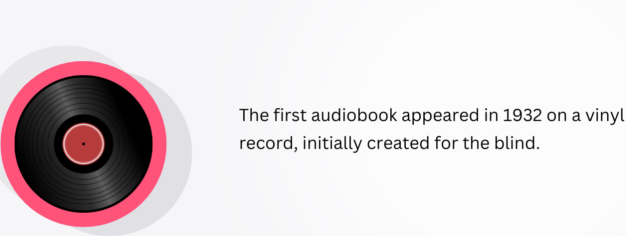
In 1932, the American Foundation for the Blind pioneered the release of audiobooks on vinyl records. This breakthrough aimed to provide access to books for visually impaired individuals. Among the initial audiobooks produced were Shakespeare’s works and even the US Constitution.
In Conclusion
The world of audiobooks is flourishing, captivating millions of listeners worldwide. With a thriving market, increasing accessibility, and diverse genres, audiobooks have revolutionized the way we experience literature. As we’ve explored the 10 astonishing audiobook statistics, it’s clear that this medium has become an integral part of modern storytelling and reading culture. So whether you’re a seasoned audiobook enthusiast or considering dipping your toes into this immersive world, there’s no doubt that audiobooks are here to stay. After exploring these Audiobook Statistics, you now possess a deeper understanding of the audiobook industry’s past, present, and future. As our world continues to embrace digital advancements, these figures indicate that audiobooks are experiencing steady growth and have established a lasting presence.
We welcome any additional statistics or insights you may have to enhance our understanding of this fascinating industry.

